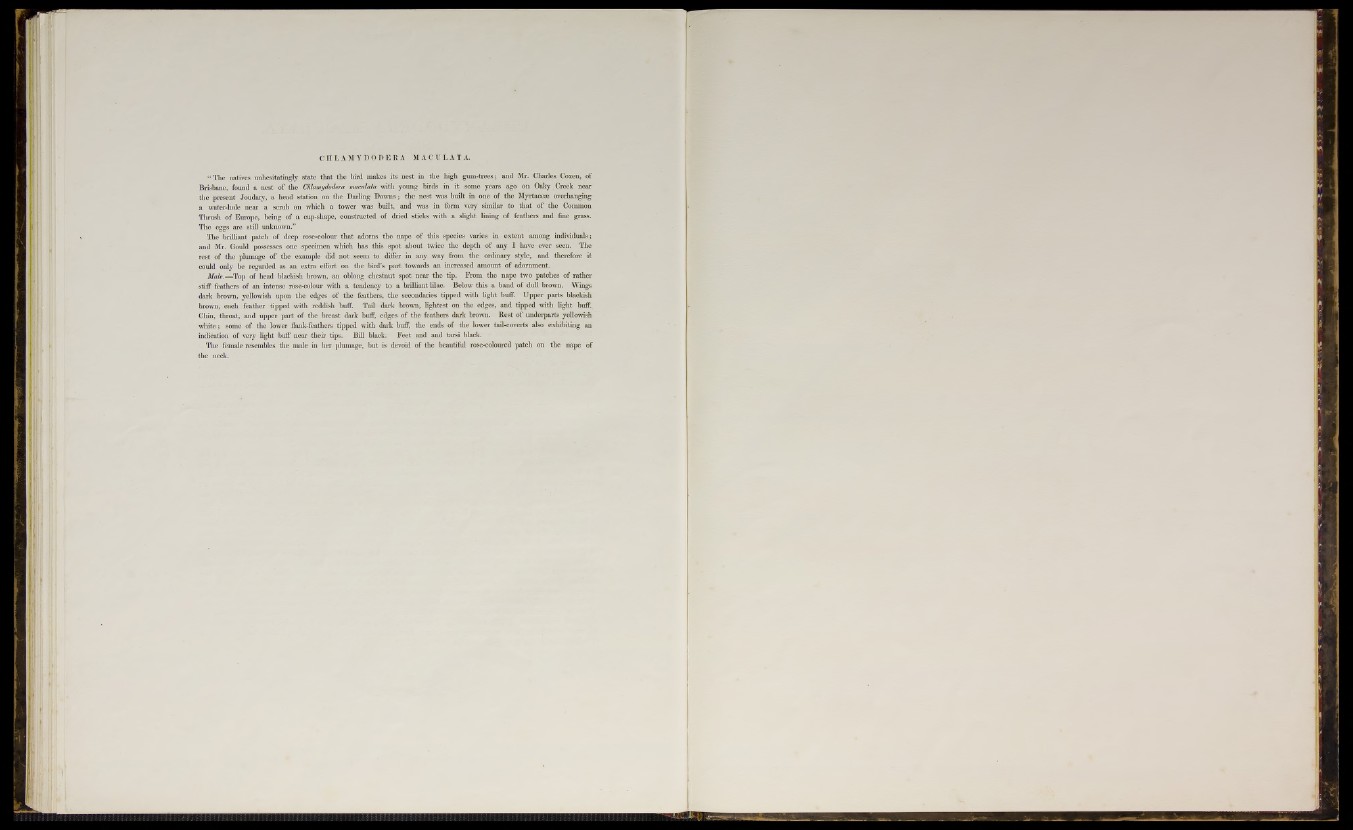
C H L AM Y D O D E R A MACU LAT A .
“ The natives unhesitatingly state that the bird makes its nest in the high gum-trees; and Mr. Charles Coxen, of
Brisbane, found a nest of the Chlamydodera mamlata with young birds in it some years ago on Oaky. Creek near
the present Joudary, a head station on the Darling Downs; the nest was built in one of the Myrtaceas overhanging
a water-hole near a scrub on which a tower was built, and was in form very similar to that of the Common
Thrush of Europe, being of a cup-shape, constructed of dried sticks with a slight lining of feathers and fine grass.
The eggs are still unknown.”
The brilliant patch of deep rose-colour that adorns the nape of this species varies in extent among individuals;
and Mr. Gould possesses one specimen which has this spot about twice the depth of any I have ever seen. The
rest of the plumage of the example did not seem to differ in any way from the ordinary style, and therefore it
could only be regarded as an extra effort on the bird’s part towards an increased amount o f adornment.
Male.—Top of head blackish brown, an oblong chestnut spot near the tip. Prom the nape two patches o f rather
stiff feathers of an intense rose-colour with a tendency to a brilliant lilac. Below this a band of dull brown. Wings
dark brown, yellowish upon the edges of the feathers, the secondaries tipped with light buff. Upper parts blackish
brown, each feather tipped with reddish buff. Tail dark brown, lightest on the edges, and tipped with light buff.
Chin, throat, and upper part of the breast dark buff, edges of the feathers dark brown. Rest of underparts yellowish
white; some of the lower flank-feathers tipped with dark buff, the ends of the lower tail-coverts also exhibiting an
indication of very light buff near their tips. Bill black. Feet and and tarsi black.
The female resembles the male in her plumage, but is devoid of the beautiful rose-coloured patch on the nape of
the neck.